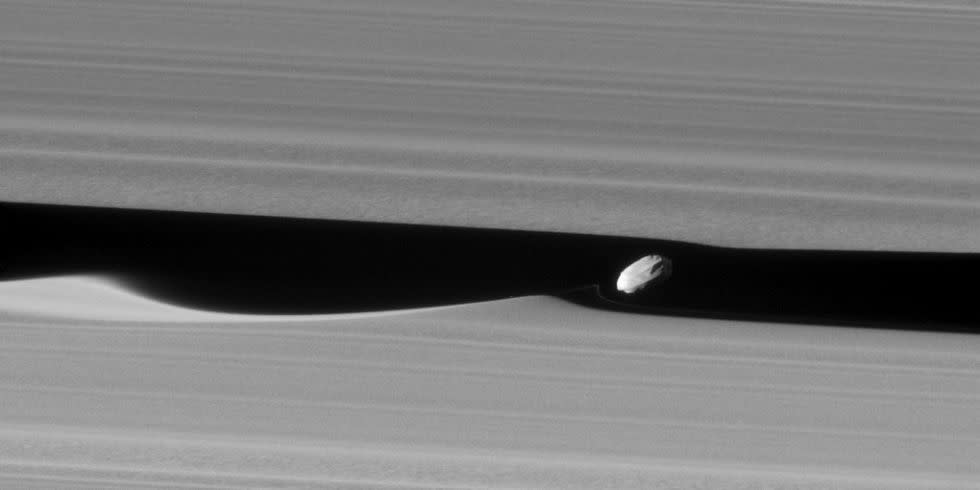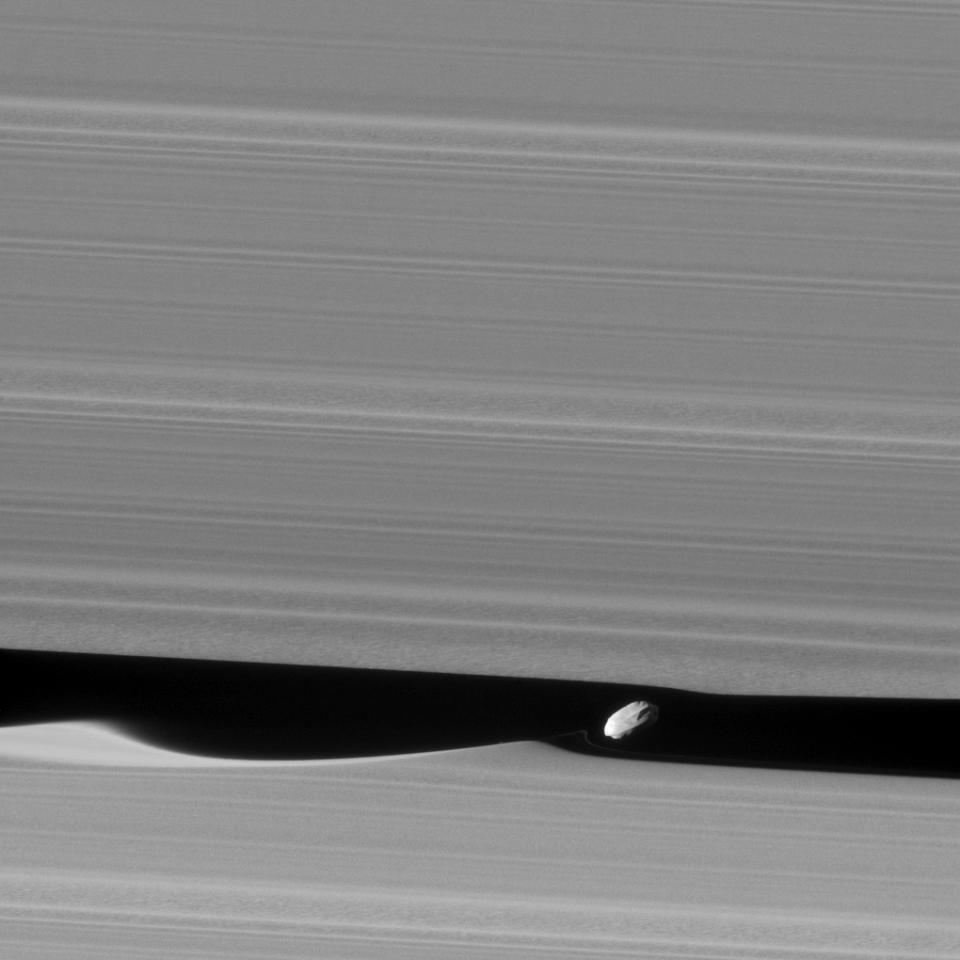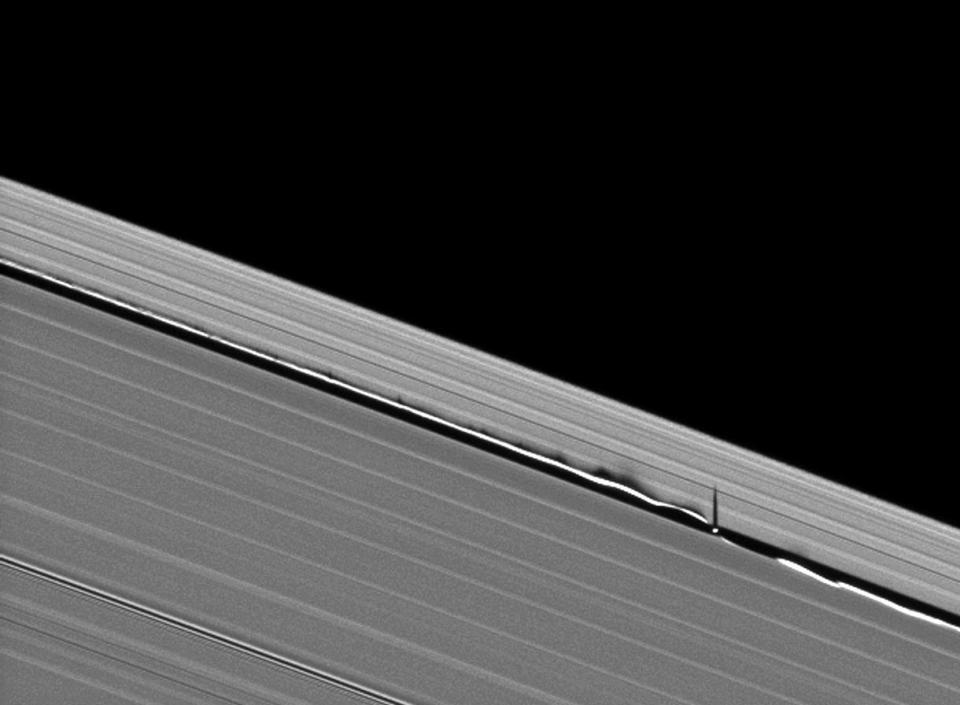Cassini Takes Close Ups of Saturn's Moon That's Inside a Ring

NASA's Cassini spacecraft at Saturn just keeps sending us treasures. In this image, taken January 16, we see the moon Daphnis, a 5-mile diameter chunk of rock and ice, orbiting inside a gap at the outer edge of Saturn's A Ring. The 26-mile-wide Keeler Gap is swept clear of debris by Daphnis as it orbits, and the little moon's gravity tugs at the edges of the gap to cause waves in Saturn's ring, hence the moon's nickname, wavemaker.
Cassini took this photo from 17,000 miles out while it was performing one of its ring-grazing orbits , skirting the edge of Saturn's outer rings. The photo is the closest and clearest image of Daphnis yet. The angle and perspective of the spacecraft cause the gap to look narrower than it actually is due to foreshortening-think of crouching to look across the surface of a table that has a gap in it. But even so, you can clearly see the waves caused by Daphnis as it passes close to the edges of the ring.

You can see a ridge around Daphnis's equator, common on Saturn's small ring moons such as Atlas and Pan, and it appears that there is also a parallel ridge near the moon's northern pole. These little ring moons have very smooth surfaces, likely from accumulating fine particles pulled from the rings, though some small craters can be seen on Daphnis as well.
At the peaks of the waves, which run both vertically and horizontally to the rings, you can see a fine dusting of material that was stirred up when the wavemaker passed close by. In contrast, the edges of the Keeler Gap that have not been disturbed by Daphnis are much sharper. You can also see a faint, narrow wisp of ring material following behind Daphnis (to its left) that was likely picked up when Daphnis drew a pocket of material out of the ring.

Cassini will continue its ring-grazing orbits for the next three months, and it should pick up some more amazing images of Saturn's ring moons during that time. Prometheus, for example, sometimes passes through Saturn's F Ring, leaving tendrils of icy particles in its wake.
The craft will then dive in between Saturn and its rings to get the closest look at the planet ever obtained, before finally plunging headlong into Saturn to burn up before the fuel runs out. But obviously, Cassini still has many gifts to give.
Source: NASA
You Might Also Like

